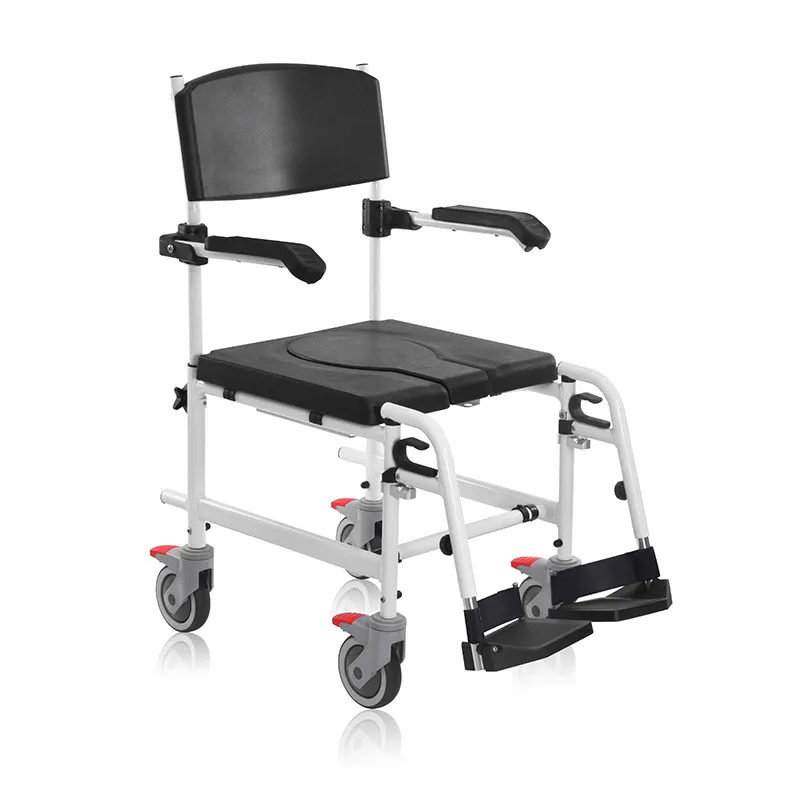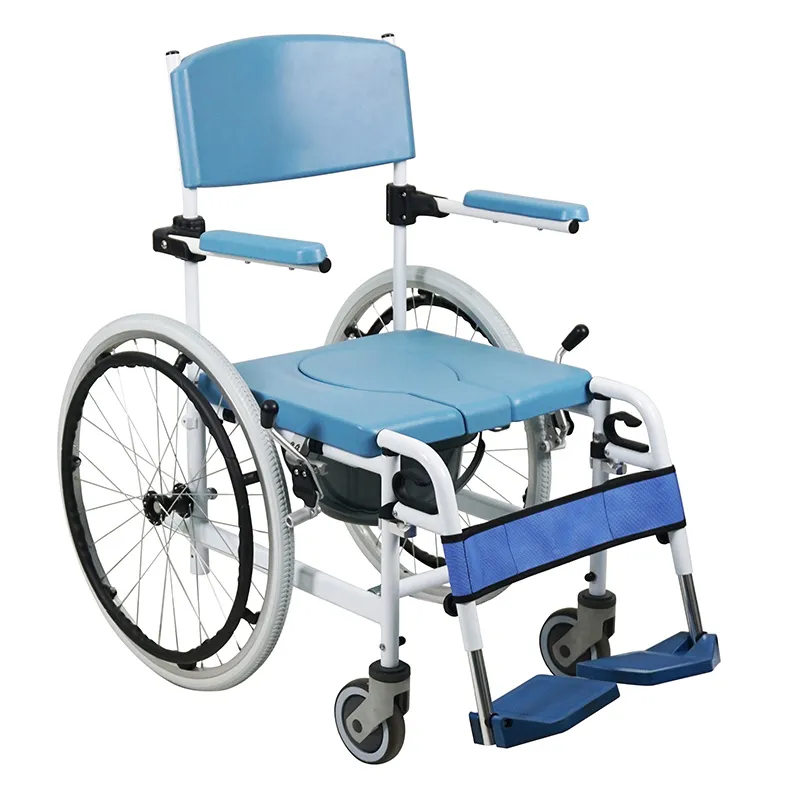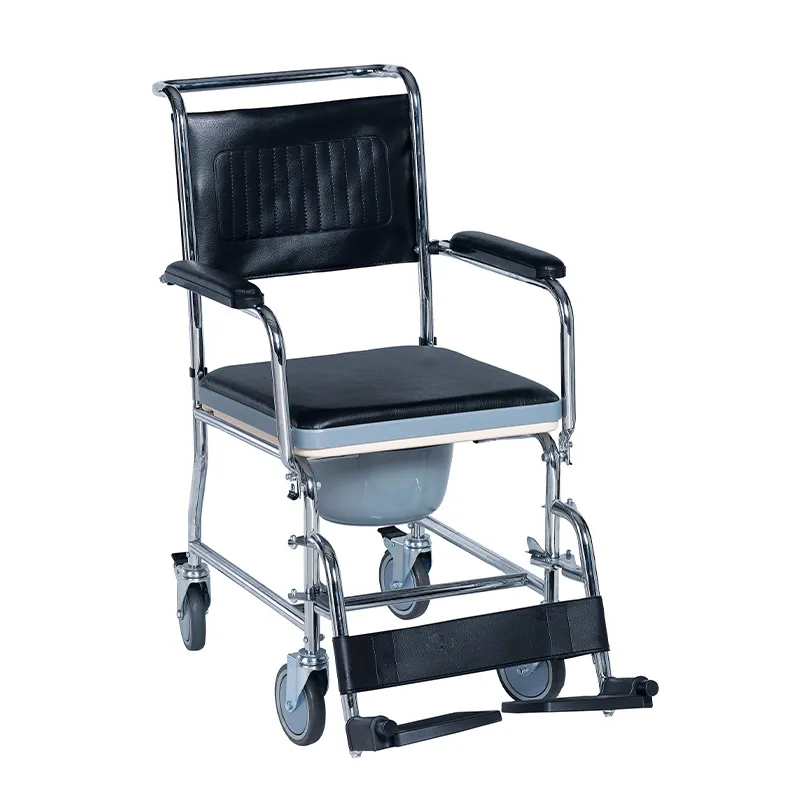
Who needs a toilet wheelchair? How to use it?
2024-07-18 15:30
As one of the important equipment, the commode wheelchair provides great convenience and support for people with limited mobility. This article will explore in depth which groups of people need a toilet wheelchair and how to use it correctly, providing readers with a comprehensive understanding and practical operation guidance.

Who needs a toilet wheelchair?
People who need a toilet wheelchair include: the elderly (osteoarthritis, rheumatism), the disabled, patients in rehabilitation, stroke or brain injury patients, temporary mobility problems (injury, postoperative recovery), etc.
1. Elderly people:
As they age, the elderly generally face the problem of decreased mobility, especially those with osteoarthritis, rheumatism and muscular dystrophy. The toilet wheelchair provides them with support and safety when using the toilet, reduces the risk of falling, and improves the quality of life.
2. Disabled people:
Disabled people with mobility impairments due to congenital or acquired reasons need a commode wheelchair to help them complete their daily toilet needs. The design of the toilet wheelchair facilitates their independent use, reduces dependence on others, and enhances self-esteem and independence.
3. Convalescents:
Patients who are recovering from surgery, trauma or illness, especially those with lower limb limitations, such as fractures and hip replacements, need to use toilet wheelchairs during their recovery. They provide the necessary support and stability to help patients gradually regain their independence during the recovery process.
4. Patients with stroke or brain injury:
Patients with hemiplegia or complete paralysis after stroke or brain injury often need commode wheelchairs to complete daily living activities such as toileting. Commode wheelchairs can help them complete these basic needs without the help of others, reducing the burden on caregivers.
5. Temporary mobility impaired:
Some people who have short-term mobility impairments due to temporary circumstances such as injuries and postoperative recovery can also use commode wheelchairs. They provide temporary convenience and support to help these people get through the period of mobility impairment.

How to use a toilet wheelchair?
Steps to use a toilet wheelchair: Preparation (check the wheelchair's brakes) → adjust the height (make the knees at a 90-degree angle) → move to the appropriate position → assist the user in getting on the wheelchair → use it correctly (use the armrests to assist in standing and sitting down) → clean and maintain.
1. Preparation:
Before using a toilet wheelchair, first ensure the safety and cleanliness of the wheelchair. Check whether the wheelchair's brakes are normal and ensure that all parts of the wheelchair are intact. Clean and disinfect the wheelchair, especially the seat and commode parts, to ensure hygiene.
2. Adjust the height:
Adjust the seat height of the commode wheelchair according to the user's height and needs. The seat height should allow the user to place both feet flat on the ground and knees at a 90-degree angle when sitting to ensure comfort and safety.
3. Move to the appropriate position:
Push the toilet wheelchair to the bathroom or other place where it is needed, ensuring that the ground is flat and free of obstacles. Secure the wheelchair above the toilet or commode to ensure a stable position. Apply the wheelchair brakes to prevent the wheelchair from moving during use.
4. Assist in getting on the wheelchair:
For users with reduced mobility, others may be needed to assist them in getting on the wheelchair. The assistant should stand at the side of the user to help them transfer steadily to the commode wheelchair. Make sure the user is sitting firmly before proceeding to the next step.
5. Correct use:
When sitting on the toilet wheelchair, the user should keep their back straight and their feet flat on the ground. Use the handrails to assist in standing and sitting down to ensure stable movements. Some commode wheelchairs are equipped with safety belts, which can increase safety during use.
6. Cleaning and maintenance:
After use, the toilet wheelchair should be cleaned in time, especially the seat and toilet bowl to ensure its hygiene. Check the various parts of the wheelchair regularly to ensure that they function properly. Repair and replace them when necessary to ensure the long-term safety of the wheelchair.

Actual case analysis
Case 1: Elderly people use commode wheelchair
Mr. Zhang, 78 years old, has difficulty in moving due to osteoarthritis. His family bought him a high-end commode wheelchair with a padded seat and safety armrests. During use, Mr. Zhang said: "This commode wheelchair allows me to go to the toilet independently, and I no longer need my children to take care of me all the time, and my life has become more comfortable."
Operation steps:
● Family members help Mr. Zhang move from the bed to the commode wheelchair, ensuring that the seat height is appropriate.
● Mr. Zhang stands and sits down with the armrests to ensure stable movements.
● After use, the family cleans the wheelchair and pushes it back to the bedroom for standby.
Conclusion
As an important assistive device, the commode wheelchair has significant advantages in improving the independence, safety and convenient care of the elderly, disabled people, patients in rehabilitation and those with temporary mobility difficulties.
However, it also has certain disadvantages in terms of weight and volume, cost, restrictions on the use environment, difficulty in adaptation and cleaning and maintenance. When purchasing and using a toilet wheelchair, it is necessary to comprehensively consider the specific needs of the user and the use environment to ensure that the toilet wheelchair purchased can provide the best support and convenience.
It is hoped that the analysis and suggestions in this article can provide readers with valuable references to help them make wise decisions when purchasing and using a commode wheelchair.








